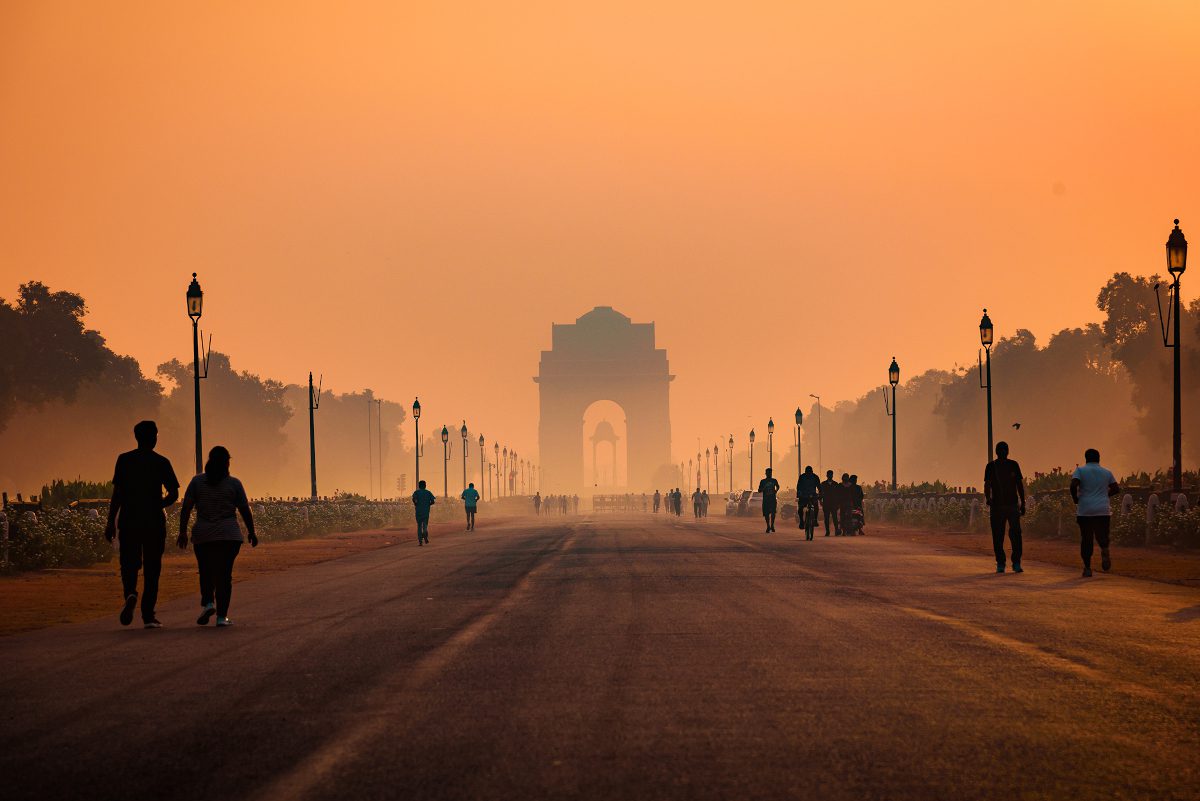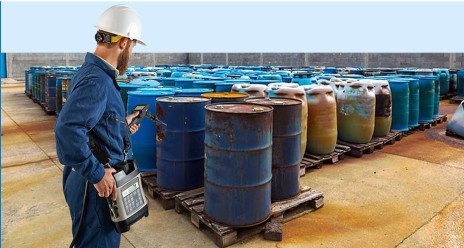
Instrumentation expert Thermo Fisher Scientific summarises the problem and its history, with discussion of the latest generation of measurement systems and their potential impact.
The industrial revolution – despite its many benefits – sounded a death knell for air quality, increasing coal-generated smog levels 50-fold in many large cities. Centuries on, sources of airborne pollution are only becoming more numerous and wide ranging.
Diverse compounds are emitted by everything from motor vehicles to power plants, and include both greenhouse gases and short-lived climate pollutants – which are known to fuel global warming – as well as a host of volatile organic compounds that can lead to short- and long-term health problems in humans.
In an effort to combat these effects, more and more nations have introduced legislation designed to meaningfully decrease pollution levels, along with monitoring programs to confirm the efficacy of these measures. This article takes a look at the hurdles facing the quest for cleaner air, and discusses the effects that regulation – or lack thereof – are having on air quality around the world.
The impact of poor air quality
The release of greenhouse gases into the atmosphere is well known to contribute to climate change, with carbon dioxide and methane being the subject of many global and national mitigation strategies that aim to break the vicious cycle of global warming. However, these gases are not the only emissions that should be a cause for concern. Noxious gases, airborne particulate matter and volatile organic compounds (VOCs) are having a disastrous effect on human health, and are associated with a host of illnesses – including strokes, chronic respiratory diseases, lung cancers, and heart attacks – and premature deaths.
The World Health Organization (WHO) estimates that the burden of disease attributable to air pollution is now on a par with other major global health risks – such as unhealthy diet and tobacco smoking – and it is recognized as the single biggest environmental threat to human health, causing millions of deaths and lost years of healthy life annually.2 Of real concern is its estimate that 99 percent of the global population breathes air that exceeds its published air quality limits.3 Cities in developing countries are often the hardest hit, due to the combination of minimal pollution regulation, concentrated emission sources and tightly packed buildings that prevent smog dispersion. For example, the Indian city of Delhi has some of the worst air quality in the entire world. There, residents are exposed to high levels of pollution – estimated to be equivalent to smoking more than two packs of cigarettes a day – which is leading to severe lung damage in roughly 40 percent of the city’s juvenile population.4
But it isn’t only the developing world that is impacted; the European Environment Agency (EEA) recognizes air pollution as a major cause of premature deaths and diseases, and the single largest environmental health risk in Europe.5 It highlights that most Europeans, especially in cities, live in areas where air pollution can reach high levels, with fine particulate matter driving the most significant health problems. EEA estimates from 2019 attributed approximately 307,000 premature deaths to fine particulate matter in the 27 EU Member States, with a further 40,400 linked to nitrogen dioxide, and 16,800 to ground-level ozone. EEA monitoring found that, in general, regions characterized by lower GDP per capita – usually in eastern and south-eastern Europe – had greater levels of fine particulate matter, largely driven by the combustion of low-quality solid fuels in low-efficiency ovens for domestic heating, translating into higher numbers of premature deaths.
Air pollution does not just cause health problems, it also presents a significant social and economic burden. Lost days of labor due to illness, reduced working life due to premature death, lost earnings, and increased healthcare expenditure all reduce productivity and inhibit economic growth. Furthermore, areas of high air pollution – which are also typically less affluent – are much less attractive destinations for talented workers, further inhibiting their competitiveness and contributing to their declining social and economic status. A 2022 report from the World Bank estimated that the global health cost of mortality and morbidity caused by exposure to fine particulate matter air pollution in 2019 was $8.1 trillion, equivalent to 6.1 percent of global gross domestic product.6
Global regulations
The widespread challenges presented by poor air quality require global action. Fortunately, awareness of the dangers is steadily increasing. To guide countries in combatting this problem, the United Nations (UN) Environment Assembly has successfully adopted the ‘Preventing and reducing air pollution to improve air quality globally’ resolution, requiring the regular assessment of member states’ progress in implementing key actions designed to significantly improve air quality.7 The UN General Assembly has also begun to take meaningful steps, with its member states signing onto resolutions that contain environmental protection and air quality subsections, such as ‘The future we want’8 and ‘Transforming our world: 2030 agenda for sustainable development’.9 These international pledges – coupled with initiatives to raise awareness, like ‘The international day of clean air for blue skies’10 – mark the UN’s commitment to substantially reducing the number of illnesses and deaths caused by polluted air, water and ground by 2030, giving particular attention to inner-city air quality and waste management.
Tackling the challenge at a local level
Despite the global resolutions and recognition of the problem, the first-ever assessment of air quality laws and regulations by the UN Environment Programme (UNEP) in 2021 found that one-third of the world’s countries have no legally-mandated outdoor air quality standards and, where they exist, standards vary widely, and often misalign with WHO guidelines.11 Additionally, at least 31 percent of countries that do have the power to introduce such ambient air quality standards have yet to adopt them. It is recognized by the UN and WHO that environmental monitoring is critical for good air quality governance – to accurately track changes in emissions and to assess the impact of country-level mitigation strategies where they exist – yet it is not legally required in at least 37 percent of countries, and so there is still a lot of work to be done.
Percentage of countries with legal requirements to monitor air quality. Source: The first global assessment of air quality legislation, UNEP.11
Monitoring solutions
Improving air quality monitoring can be supported by technological innovations that make it more cost effective and easier to use. There are many state-of-the-art technologies that allow real-time monitoring of the most common and hazardous pollutants. Electrochemical analyzers are perfectly suited to the measurement of noxious gases – such as nitrogen dioxide, carbon monoxide and ozone – and are sensitive enough to detect even minute concentrations of these harmful pollutants. To determine the concentration of particulates in the air, optical counters are usually the go-to solution, and function by measuring the amount of scattering caused by individual particles as they pass through a beam of light. Finally, photoionization detectors are generally employed for VOC measurements, using an ultraviolet lamp to identify the unique ionization fingerprints of the most common organic compounds. Portable detectors that combine multiple measurement techniques in a handheld unit allow detection of virtually all organic and inorganic compounds with one device that can be employed across a wide range of applications, from traffic pollution measurements to fenceline emissions monitoring of natural gas processing plants, making air quality monitoring quicker and easier on a local level.

The technologies discussed so far are perfectly suited to localized measurements, and can accurately determine air pollution at ground level. To compliment this, space-based observations of tropospheric pollutants – like those carried out by the Tropospheric Emissions: Monitoring of Pollution (TEMPO) satellite instrument – can give an indication of air pollution levels on a national scale, as well as track harmful chemicals being transported across international borders by global weather patterns.12
Next steps to a cleaner future
Air pollution is not a static issue affecting individual countries, and its transboundary nature requires a collective global response. Mitigative strategies that are already in place, supported by both the UN and governments around the world, must be improved and expanded in the quest for cleaner air. Rigorous monitoring programs using the latest technologies are essential to assess the impact of these measures. Localized measurements, coupled with space-based tropospheric observations, will generate the necessary data to establish whether the global community is doing enough to minimize toxic emissions, thereby reducing the health, economic and social burdens of poor air quality and – most importantly – preventing millions of premature deaths per year.
References
- Pollution Action Note – Data you need to know. United Nations Environment Programme. https://www.unep.org/interactive/air-pollution-note/. Accessed 03.03.23
- WHO global air quality guidelines: particulate matter (PM2.5 and PM10), ozone, nitrogen dioxide, sulfur dioxide and carbon monoxide. World Health Organization. ISBN 978-92-4-003422-8
- Billions of people still breathe unhealthy air: new WHO data. World Health Organization. https://www.who.int/news/item/04-04-2022-billions-of-people-still-breathe-unhealthy-air-new-who-data. Accessed 03.03.23
- Delhi’s air pollution is triggering a health crisis. BBC News. https://www.bbc.co.uk/news/world-asia-india-41925067. Accessed 03.03.23
- Air pollution: how it affects our health. European Environment Agency. https://www.eea.europa.eu/themes/air/health-impacts-of-air-pollution. Accessed 03.03.23
- The Global Health Cost of PM2.5 Air Pollution: A Case for Action Beyond 2021. International Development in Focus. World Bank. doi:10.1596/978-1-4648-1816-5. License: Creative Commons Attribution CC BY 3.0 IGO
- Actions on air quality report update. United Nations. https://www.unep.org/explore-topics/air/what-we-do/taking-stock-global-efforts/actions-air-quality-report-update. Accessed 03.03.23
- The future we want – outcome document. United Nations. https://sustainabledevelopment.un.org/futurewewant.html. Accessed 03.03.23
- Transforming our world: the 2030 agenda for sustainable development. United Nations. https://sdgs.un.org/2030agenda. Accessed 03.03.23
- International day of clean air for blue skies. United Nations. https://www.un.org/en/observances/clean-air-day. Accessed 18.01.23
- Regulating Air Quality: The first global assessment of air pollution legislation. United Nations Environment Programme. ISBN 978-92-807-3872-8
- TEMPO: A New Era of Air Quality Monitoring from Space. United States Environmental Protection Agency. https://www.epa.gov/sciencematters/tempo-new-era-air-quality-monitoring-space. Accessed 03.03.23






